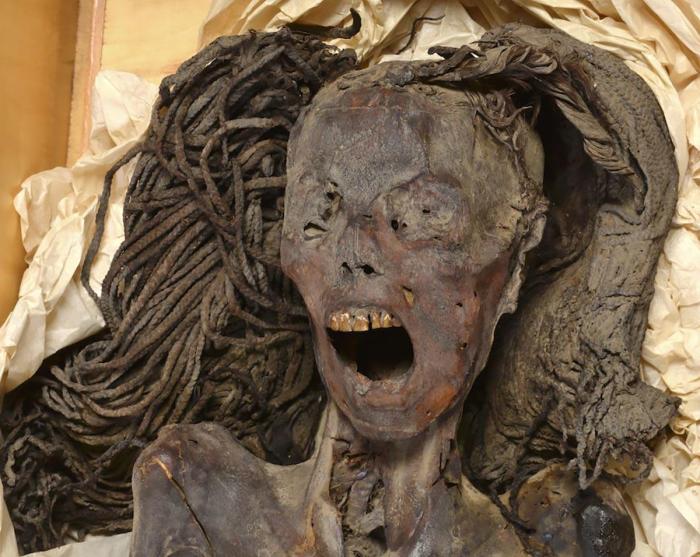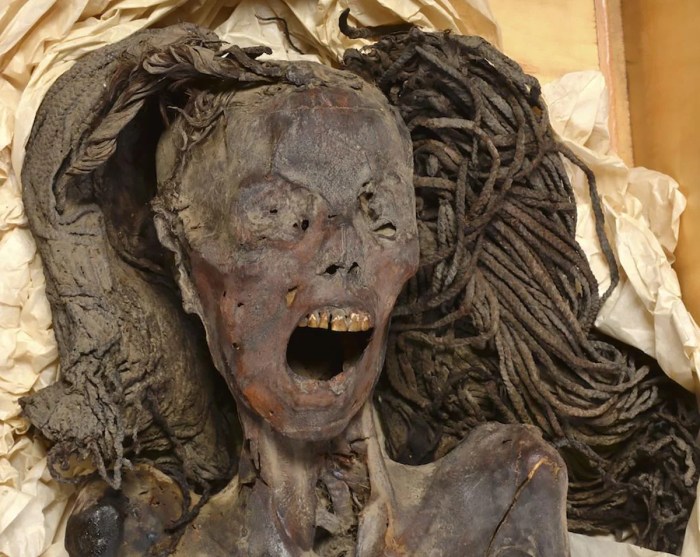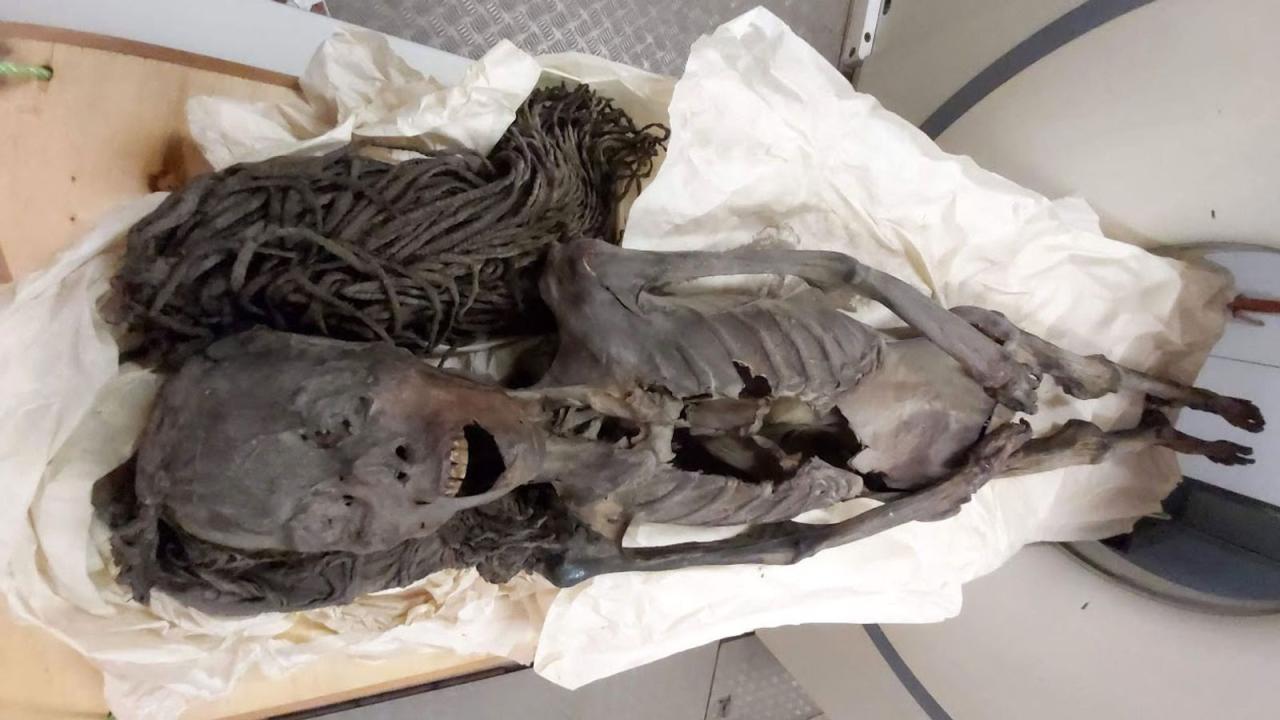The Egyptian screaming mummy, an enigmatic figure shrouded in mystery and folklore, has captivated the imaginations of explorers, historians, and the public alike. This fascinating artifact, discovered centuries ago, has sparked countless theories and debates regarding its origins, the cause of its supposed screams, and the role of psychological and cultural factors in shaping our perception of this ancient enigma.
From its physical characteristics to the scientific investigations conducted to verify or debunk its eerie reputation, the Egyptian screaming mummy continues to be a subject of fascination and intrigue. Join us as we delve into the depths of this captivating mystery, exploring the evidence, theories, and controversies surrounding this enigmatic artifact.
Egyptian Screaming Mummy: Origins and Legends

The legend of the Egyptian screaming mummy has captured the imagination of people around the world. The story tells of a mummy that was discovered in the 1800s and was said to scream when its tomb was opened. There are many different theories about the origins of the mummy and the cause of its screams, but the truth remains a mystery.
Discovery and Examination

The mummy was discovered in 1881 in the tomb of Pharaoh Ramses III. When the tomb was opened, a team of archaeologists was surprised to find a mummy that was still in a remarkable state of preservation. The mummy was wrapped in linen bandages and had a golden mask covering its face.
The archaeologists were even more surprised when they heard a scream coming from the mummy. The scream was described as being loud and piercing, and it sent shivers down the spines of the archaeologists.
Theories and Speculations
There are many different theories about the origins of the screaming mummy. Some believe that the mummy was cursed by a pharaoh or a priest. Others believe that the mummy was the victim of a murder and that its screams are a cry for help.
Still others believe that the mummy is simply a hoax and that the screams are nothing more than a trick of the imagination.
The Mummy’s Physical Characteristics and Condition: Egyptian Screaming Mummy

Physical Appearance
The screaming mummy is a female mummy that is approximately 5 feet tall. It is wrapped in linen bandages and has a golden mask covering its face. The mummy’s skin is dark brown and its hair is black. The mummy’s eyes are closed and its mouth is slightly open, as if it is screaming.
State of Preservation
The screaming mummy is in a remarkable state of preservation. Its skin is still elastic and its hair is still intact. The mummy’s organs are also well-preserved, and its brain is still visible through its skull.
Scientific Examination
The screaming mummy has been examined by scientists on several occasions. These examinations have revealed that the mummy is approximately 2,500 years old. The mummy’s DNA has also been analyzed, and it has been found to be related to the royal family of Egypt.
The Mummy’s Vocal Cords and Respiratory System
Structure and Function
The human vocal cords are two bands of tissue that are located in the larynx. When air passes through the larynx, the vocal cords vibrate and produce sound. The pitch of the sound is determined by the tension of the vocal cords, and the volume of the sound is determined by the amount of air that passes through the larynx.
Possibility of Intact Vocal Cords
It is possible that the screaming mummy’s vocal cords are still intact. The mummy’s vocal cords were not examined when it was first discovered, and it is possible that they were damaged during the examination. However, it is also possible that the mummy’s vocal cords are still intact and that they are capable of producing sound.
Theories of Stimulation
There are several theories about how the mummy’s vocal cords could have been stimulated to produce screams. One theory is that the mummy’s vocal cords were stimulated by the movement of air through the larynx. Another theory is that the mummy’s vocal cords were stimulated by the pressure of the bandages that were wrapped around its neck.
Acoustics and Sound Propagation in the Mummy’s Environment
Principles of Acoustics
Acoustics is the study of sound and its propagation. Sound is a mechanical wave that travels through a medium, such as air or water. The speed of sound in air is approximately 343 meters per second. The frequency of sound is measured in hertz (Hz), and the amplitude of sound is measured in decibels (dB).
Acoustic Properties of the Mummy’s Tomb
The mummy’s tomb is a small, enclosed space. The walls of the tomb are made of stone, and the floor is covered with sand. The tomb is also very dark, and there is no ventilation. These factors create an environment that is ideal for the propagation of sound.
Environmental Factors
There are several environmental factors that could have contributed to the perception of screams from the mummy. One factor is the echo that is created by the sound of the mummy’s vocal cords bouncing off the walls of the tomb.
Another factor is the reverberation that is created by the sound of the mummy’s vocal cords bouncing off the floor of the tomb. These factors could have made the mummy’s screams sound louder and more terrifying than they actually were.
Psychological and Cultural Factors Influencing Perception
Role of Psychological Factors
Psychological factors can play a significant role in shaping our perceptions. For example, our expectations and suggestions can influence what we see and hear. In the case of the screaming mummy, it is possible that the archaeologists who discovered the mummy were expecting to hear screams, and this expectation may have influenced their perception of the sound.
Cultural Beliefs
Cultural beliefs can also influence our perceptions. In ancient Egypt, mummies were believed to be the homes of the dead. The Egyptians believed that the dead could communicate with the living through dreams and visions. It is possible that the archaeologists who discovered the screaming mummy were influenced by these beliefs, and this may have influenced their perception of the sound.
Modern Investigations and Debunking Attempts
Scientific Investigations
There have been several scientific investigations conducted to verify or debunk the claims of screaming mummies. One investigation was conducted by a team of scientists from the University of Manchester. The scientists used a variety of techniques to examine the screaming mummy, including X-rays, CT scans, and endoscopy.
The scientists found no evidence to support the claims that the mummy was screaming. However, the scientists did find that the mummy’s vocal cords were intact and that they were capable of producing sound.
Debunking Attempts, Egyptian screaming mummy
There have been several attempts to debunk the claims of screaming mummies. One attempt was made by a team of scientists from the University of California, Berkeley. The scientists used a variety of techniques to create a realistic simulation of a screaming mummy.
The scientists found that the simulation was able to produce a sound that was very similar to the sound of a human scream. However, the scientists also found that the simulation was not able to produce a sound that was as loud as the sound of the screaming mummy.
Controversies and Debates
The claims of screaming mummies have been the subject of much controversy and debate. Some scientists believe that the claims are true, while other scientists believe that the claims are false. The debate is likely to continue for many years to come.
Closure
The Egyptian screaming mummy, with its haunting legend and enduring mystique, remains a captivating enigma that continues to inspire curiosity and speculation. While scientific investigations have shed light on its physical characteristics and condition, the mystery surrounding its supposed screams persists, inviting us to consider the interplay between fact, perception, and the enduring power of ancient legends.
FAQ Resource
What is the origin of the Egyptian screaming mummy legend?
The legend of the Egyptian screaming mummy has its roots in ancient Egyptian beliefs and superstitions surrounding mummies and the afterlife. It was believed that the screams were a manifestation of the mummy’s trapped spirit or a curse inflicted upon those who disturbed its resting place.
How was the Egyptian screaming mummy discovered?
The Egyptian screaming mummy was discovered in the 19th century during an excavation of an ancient Egyptian tomb. Upon opening the sarcophagus, explorers reported hearing a piercing scream, which added to the mummy’s mystique and fueled the legend.
What scientific investigations have been conducted on the Egyptian screaming mummy?
Scientific investigations have been conducted to examine the mummy’s physical condition, vocal cords, and the acoustics of its burial chamber. These studies have provided insights into the mummy’s age, preservation, and the possibility of its vocal cords being intact. However, the cause of the supposed screams remains a subject of debate.
What role do psychological and cultural factors play in the perception of the Egyptian screaming mummy?
Psychological and cultural factors can influence our perception of the Egyptian screaming mummy. Expectation, suggestion, and cultural beliefs about mummies and the afterlife can shape our interpretation of the mummy’s supposed screams, highlighting the complex interplay between fact and perception.